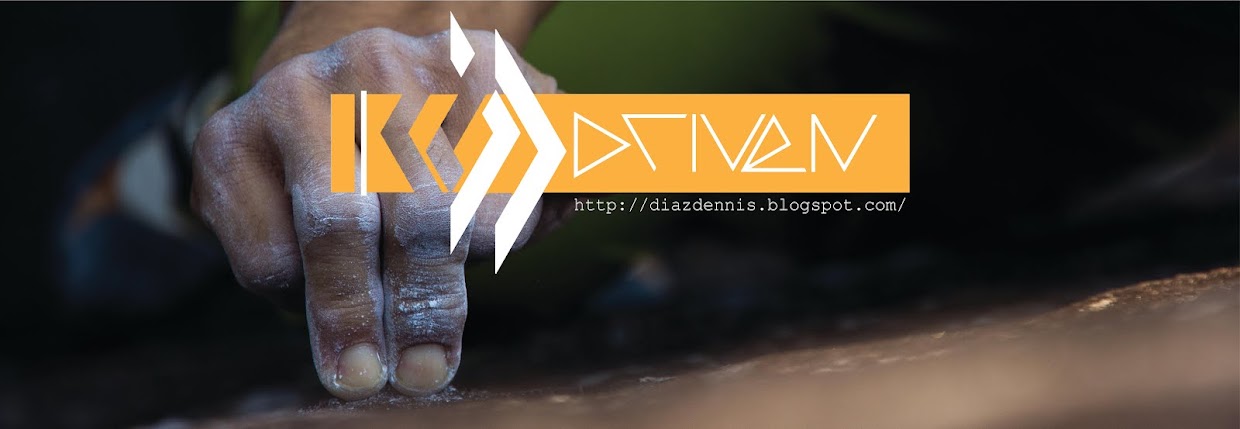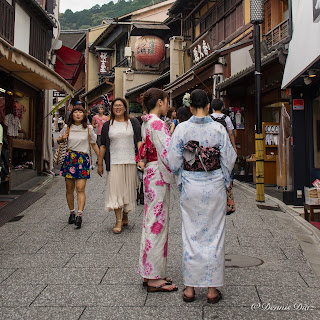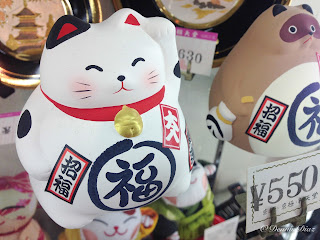July 7, 2014. Running half asleep is something I’m familiar with. It’s the simple task of putting one foot ahead of the other repetitively while one eye is shut and half the consciousness is still dreaming. Sometimes for brief stretches of unobstructed paths I can close both eyes and take a short nap while running, that is about ten to fifteen full strides between blinks. I have yet to take that to the next level, maybe go for a full minute. This happens when I’m forced to get out of bed very, very early in the morning out of intense need to keep to a strict running routine. It was exactly what I had to do the morning of the day we were scheduled to visit Kyoto University. We had to leave earlier than usual to make the long train ride from Osaka to Kyoto.
We met up with Professor Kazu at the train station and walked together to Kyoto University where he gave a presentation of the current studies he and his colleagues were doing. They conducted a field research in the typhoon Haiyan struck regions of Tacloban and were in the process of studying material resiliency and reaction to violent wind movement during typhoons. Together with the U.P. College of Architecture, data from the experiments would be used for design applications for the purpose of assessment and the redesign of facilities for sustainable typhoon resistant structures in the Philippines.
Shortly after the presentation we visited the enormous wind tunnel testing lab housed in one of the buildings inside the campus. We were given the chance to experience typhoon wind speeds by standing in direct path of the windblast coming from the massive turbine. Our hair wafted with the generated wind deforming the skins over our faces. It was amusing until I realized the business of studying typhoons is something we Filipinos should be conducting ourselves. Nothing was mediocre about the lab. It screamed serious and as we moved on to another section of the facility my deepest thoughts rested on why something so simple was still impossible to do in the Philippines.
They showed us a huge projectile gun shooting off, in a controlled manner, wood, rock, and metal replicating loose materials blown away by wind during a typhoon. It shot objects onto walls and barriers made of materials based on actual field studies in Tacloban. The campus was equipped to the teeth with the tools needed for such research. The UP College of Architecture and Kyoto University promised to work together in hopes of coming up with viable solutions proven by solid data aiming to amplify the resiliency of future structures against typhoons in our region.
After the staggering and impressive display of precise data collection we relaxed our academic minds with a visit to the temples in the area. We walked up Kiyomizudera Temple or roughly translated to English as “Pure Water Temple.” Kiyomizudera rested on top of a steep approach that overlooked Kyoto from the Higashiyama district, a busy street lined with shops and restaurants that serviced all those who visited the temple for centuries.
The main feature of the temple was the high wooden stage jutting out from the main hall. The stage rose 13 meters from the ground and was a construct of pure wood. There weren’t any metal joiners, nails, and bolts. Everything holding it together were made of wood, perhaps some already centuries old. Eight to nine other buildings at the Kiyomizudera were undergoing renovation during our visit. In the coming decade it could be expected that these would be completed and the entire complex of temples would generate an even greater impact and leave indelible impressions on all those who would visit.
A hefty sushi dinner followed after and we had to walk around the area to help our stomachs settle the large meal. Another of Tadao Ando’s works was in the next block and so we again were able to experience his signature concept. Ando’s works plays with the huge contrast of the heavy and the light. He uses heavily grounded concrete construction allowing views and light from the outside to seep into Zen-like pockets of spaces within the building. The simple angles of construction of Tadao Ando’s work are very minimalist. They are almost sterile, evoking calm and peace. It presented a huge contrast to the shopping district next to it with narrow streets and façades adorned with an impossible number of signs, colors, and designs rendering the place confusing with an explosion of detail.
The streets of the old district were pedestrianized and were protected with uniform roof covering. The place teemed of people scurrying for trinkets, food experiences, or services. We melded with the crowd and explored the place each on our own pace. Time ran perceptively fast in such a setting. It's a Peter Bosselman theory. It wasn’t long before I found myself walking alone. With the deepening darkness, the time ticking fast, and the looming early wake-up call the next day for our flight to Fukuoka, it would seem that I got lost but I honestly did not. It, however, came at an inconvenience to all and so with all sincerity let it be written that I humbly and reverently apologise. It does come with a priceless story however, something that I can foresee being told or at least remembered over and over. There was worry and anxiety on Tong’s face, Guiab’s worried haste to look for me, and the unsettling wait at Starbucks with Professor Kazu not knowing what went wrong.







































































































































